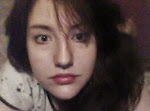 Slaughterhouse-Five by Kurt Vonnegut is a fiction novel about a protagonist named Billy Pilgrim, a novel which traces his life from his involvement in World War 2 up to his death. Although the ending of the novel actually occurs at the end of the war, after the German city of Dresden has been bombed, an event which Kurt Vonnegut himself actually witnessed. This is because Billy Pilgrim doesn't live a linear life, but instead travels to different parts of it as he becomes "unstuck" in time.
Slaughterhouse-Five by Kurt Vonnegut is a fiction novel about a protagonist named Billy Pilgrim, a novel which traces his life from his involvement in World War 2 up to his death. Although the ending of the novel actually occurs at the end of the war, after the German city of Dresden has been bombed, an event which Kurt Vonnegut himself actually witnessed. This is because Billy Pilgrim doesn't live a linear life, but instead travels to different parts of it as he becomes "unstuck" in time.There are a few interesting things about this story:
- The author as a character in the plot. At the very beginning there is an autobiographical sequence from Kurt Vonnegut about a few events that actually happened which precede the story. After that, Kurt makes cameo appearances in Billy's story. There is a meld of fiction and non-fiction.
- The concept of the fourth dimension as seen by the Tralfamadorians. In the story, Billy gets taken to the planet Tralfamadore where he is kept in a zoo by the green plunger-like creatures named the Tralfamadorians. They see things in a four-dimensional way, which is described in the book. I like the fact the book brings out that kind of idea, where concepts like time and space are discussed, as to just being a story with only the way the main character sees things. A good theme at this point is the topic of 'free will', to quote:
"If I hadn’t spent so much time studying Earthlings," said the Tralfamadorian, "I wouldn’t have any idea what was meant by 'free will.' I've visited thirty-one inhabited planets in the universe, and I have studied reports on one hundred more. Only on Earth is there any talk of free will."
I personally think that Vonnegut writes things like that in order to bring out thoughts in the reader which try to get past subjectivity.
- The parts of time in Billy's life which constitute the plot are often connected by an object or theme that relates to another point in time. If you read the book you can try and spot them. It's as if Billy is brought to different points in his life through being reminded of them by something that is in the current period of time he is in.
The blurb of my copy of the book (the cover of it is the same as the picture here) says: "Billy Pilgrim's odyssey through time reflects the journey of our own fractured lives as we search for meaning in what we are afraid to know." I think this story is quite a post-modern story, one coming out of the modernist era. That is as much as I can put my finger on, but as for how the blurb describes it, I can't really be sure. I can only imagine that Billy Pilgrim as a character is quite avoidant of dwelling on things, until the near the end of the story where he cries and seems to start having a breakdown. He finds out why when he jumps in time again, back to the aftermath of the Dresden bombing.
My opinion is that the novel has a good amount of content to offer. The style is written in a factual and explanatory tone, and the bits to think about come from the big, or varied, or unusual ideas in the story as opposed to hidden little nuances you get which run throughout the book or come up in what a character says. For example, when Kurt Vonnegut describes the end of the war, and the soldiers captured being traded between sides in a field. When I consider the reality of that situation it makes war seem far less serious and important than it should be for people. To think that people would KILL others for ideals they believed in is a concept that seems like a load of shit when you picture two sides, trading off prisoners to go home and live a normal life and that's the end. It makes it look more like an unnecessary game, or just a thing to do like a pastime, one that is devoid of any glory or righteousness or victory.




